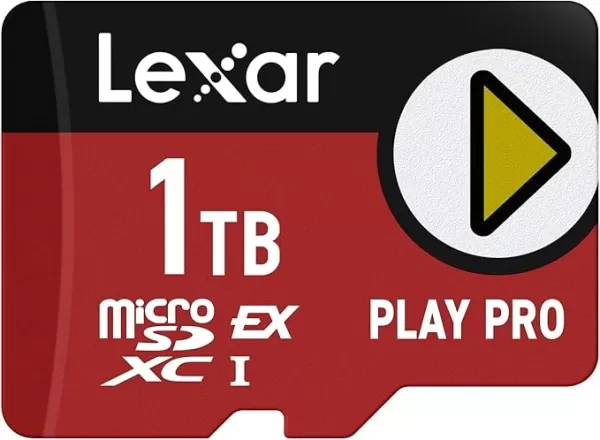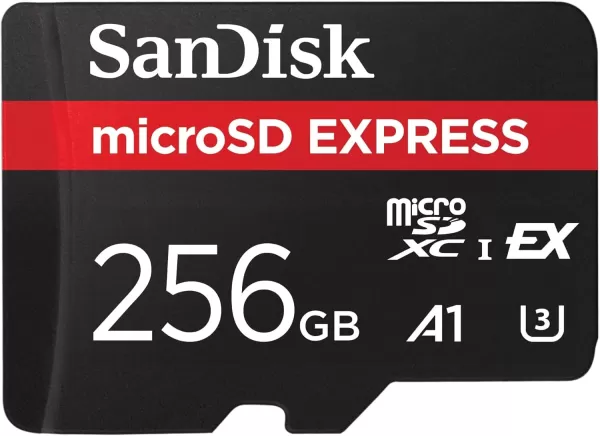by Nathan May 05,2025
Last week, Nintendo unveiled the Nintendo Switch 2, revealing that the console exclusively supports expansion through MicroSD Express cards. While this may be inconvenient for those with existing collections of MicroSD cards, it's a strategic move to leverage the superior speed of MicroSD Express technology. These cards utilize a PCIe 3.1 interface, which significantly enhances read/write speeds, aligning them closely with the UFS (Universal Flash Storage) used in the Switch 2's internal storage. This compatibility ensures that games stored on the expansion card can load just as quickly as those on the internal storage, although it means users must forgo using less expensive, non-Express MicroSD cards.
Over the years, MicroSD cards have evolved through six different speed ratings, starting from a modest 12.5MB/s with the initial SD cards, to the much faster SD UHS III at 312MB/s. The introduction of the SD Express standard five years ago marked a significant leap in speed, utilizing a PCIe 3.1 interface instead of the slower UHS-I. This change allows full-sized SD Express cards to achieve data transfer speeds up to 3,940MB/s. MicroSD Express cards, while not as fast as their full-sized counterparts, still offer impressive speeds up to 985MB/s, which is three times faster than the top non-Express MicroSD cards.
While Nintendo typically keeps its hardware decision-making process under wraps, the rationale behind requiring MicroSD Express cards for the Switch 2 is clear: speed. The use of MicroSD Express cards ensures that games load quickly, matching the performance of the console's UFS internal storage. This decision aligns with the upgrade from eMMC to UFS in the Switch 2, which has significantly reduced load times, as demonstrated by early demos. For instance, fast traveling in games like Breath of the Wild is now 35% faster, and initial load times have improved by a factor of three, according to reports from Polygon and Digital Foundry, respectively. These improvements may also be attributed to the faster CPU and GPU, which can process data more efficiently. By requiring external storage to match these speeds, Nintendo ensures that future games aren't hindered by slower SD card performance.
Moreover, this requirement paves the way for even faster storage solutions in the future. The current SD 8.0 Specification allows full-size SD Express cards to reach speeds up to 3,942MB/s, and while MicroSD Express cards can't yet match these speeds, future advancements could bring them closer to that level, especially if the Switch 2's hardware can support such speeds.
AnswerSee ResultsCurrently, MicroSD Express cards are not widely available, but this is expected to change with the launch of the Nintendo Switch 2. Lexar offers a single MicroSD Express card in capacities of 256GB, 512GB, and 1TB, with the 1TB option priced at $199.

0See it at Amazon
SanDisk, on the other hand, lists only one MicroSD Express card on its site, with a maximum capacity of 256GB, which matches the internal storage of the Switch 2. At the time of the console's launch, it's unlikely that many MicroSD Express cards will be available with capacities exceeding 512GB. However, as demand grows, companies like Samsung are expected to increase production, offering a wider range of options.

0See it at Amazon
Android Action-Defense
Mobile Legends: January 2025 Redeem Codes Released
Mythical Island Debuts in Pokemon TCG, Time Revealed
Stray Cat Falling: An Evolution in Casual Gaming
Brutal Hack And Slash Platformer Blasphemous Is Coming To Mobile, Pre-Registration Now Live
Pokémon TCG Pocket Is Dropping a Trade Feature and Space-Time Smackdown Expansion Soon
Marvel Rivals Showcases New Midtown Map
What Does the Weird Flower Do in Stalker 2?

Unearthed Ridley Scott Dune Script Reveals Bold Vision
Aug 11,2025

Crystal of Atlan: Magicpunk MMO Action RPG Hits Global Stage
Aug 10,2025

"Slayaway Camp 2: Puzzle Horror Now on Android"
Aug 09,2025

Kylo Ren's Lost Year Explored in Star Wars: Legacy of Vader
Aug 08,2025

Vampire Survivors and Balatro Shine at BAFTA Games Awards
Aug 07,2025